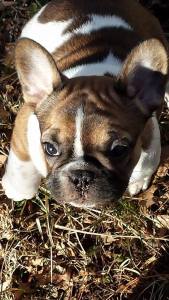I’ve been wrapping up my last experiments for the paper I have been working on lately. One experiment that I needed required the use of flow cytometry (“flow”). This is really a very basic experiment and the original use of flow. You treat your cells with whatever agent you’re interested in, in my case a chemotherapeutic drug. Then you use a DNA binding dye to allow you to determine how much DNA is in cells. In my case, I expected their to be 2-6 times as much DNA inside the cells I treated, compared to normal because of the way this chemotherapy affects cells.
 (Figure: from AbCam)
(Figure: from AbCam)
We have a really great core facility here at the University of Kentucky that specializes in flow and I have been annoyingly emailing back and forth to get protocols, ask advice, and prepare for my experiment. Finally, the cells were ready, the reagents had all arrived, and I was ready to perform the experiment. I followed my protocol to perfection, everything was going great, scientific euphoria was within my grasp and on the final step the wheels came off. The last step in the protocol was to utilize a cell strainer to strain the cells. I sat the strainer on top of the conical tubes, I gently pipetted my cell solution up and down, and then I transferred the solution to the strainer. I watched. I waited. The cell solution sat on top of the strainer. It stared blankly back at me indifferent to the amount of work I had put into collecting and preparing it. I tapped the strainer. I whacked the strainer. I tried pipeting the solution THROUGH the strainer. Nope. Time was ticking by and my appointment with the core facility had already started 15 minutes earlier. I called the core scientist and begged for more advice. Our conversation went something like this:
Me: “Hi there, this is Sarah. I am supposed to be there right now for my appointment, I am so sorry I am late but I can’t get the cell solution through the cell strainer. (This should be read with fear and panic in your voice)”
Core Scientist: “OH! SLAM it on the table. That happens all the time.”
Me: “Really? Are you sure?”
Core Scientist:”Yep, slam it.”
I hung up the phone and walked determinedly back to the bench. I picked up the first sample and looked at it in my hand. I slammed it. Suddenly, the earth shifted, the heavens parted and the cell solution slipped silently through the strainer. I worked down the line of samples eagerly slamming each one down on the counter, then flipping the strainers off, capping the samples, grabbed my ice bucket and ran out the lab door.
I sprinted across the Hospital to the room that housed the Flow Core facility. I was only 20 minutes late for my appointment and surely they could run four little samples for me before I ran out of time. I busted through the door triumphantly slamming my samples down on a desk only to realize that I was not in the Flow Core but inside some man’s office.
He looked at me, clearly very confused, and asked “May I help you?”
I started to explain to him that I was trying to get to the Flow Cytometry core facility, I was late for my appointment, and that the Exchange system stated it was located in this room. He kindly explained that it USED to be in that room but it had relocated quite some time ago, but he was not sure to what room. I snatched my ice bucket full of samples from his desk, and took off running back through the hospital to my lab.
Bounding through the door of my own lab, I went to my computer found the correct room number and took off again back across the hospital. As I skidded to a halt outside the Flow Core, I swallowed my pride and stepped inside. There were ten minutes left of my appointment. I explained my ridiculous series of events and the core scientist took pity on me. She told me she’d help me until the next appointment arrived, but then she had to stop. She worked quickly and had the machine set up to run my samples in only a few moments, when another scientist walked through the door with a slew of samples. My heart sank as we had yet to run a single sample for my experiment. At that moment, a Post Doc who was only in the Flow facility to observe and learn about another more sophisticated machine walked over and offered to run my samples for me. After briefly conferring, the Flow Scientist agreed that the Post Doc could run my samples if he wanted, and he agreed. He spent time showing me how the machine worked, how to read the settings and data readouts, and even showed me a funny poem about Flow Cytometry. We ran the samples and despite the calamity of the last hour, my data looked really great. The pilot experiment gave me really important information that I was able to use to design a full scale experiment.
After all that hullabaloo, I forgot to ask the Post Doc his name. So for now, I am just thankful for that Knight in a White Lab Coat who snatched my experiment back from the brink of utter failure and I’ll just wait for an opportunity to pay it forward.

 (Figure: from AbCam)
(Figure: from AbCam)